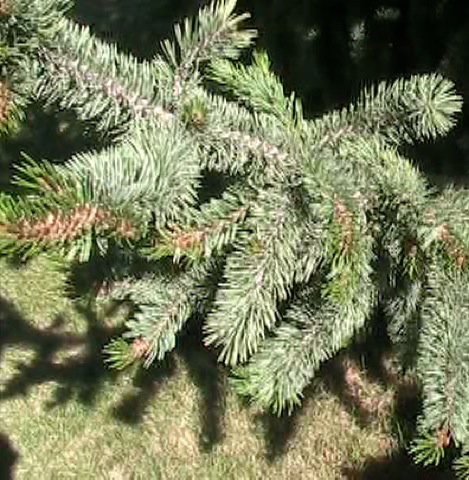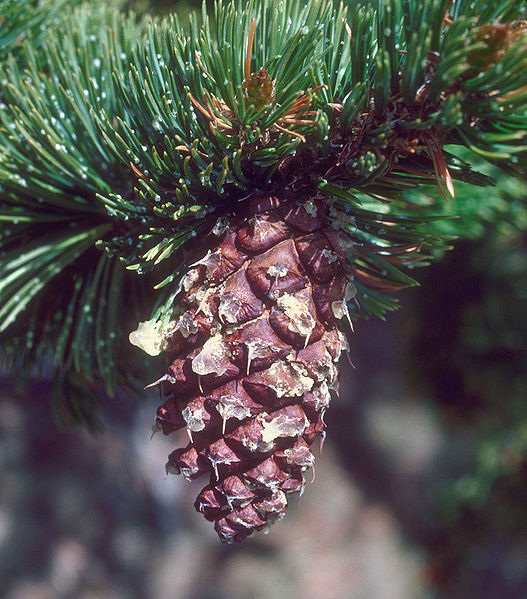| PSC 2620: Woody Trees and Shrub | Course Home | Week 13 |
Pinus aristata - Bristlecone Pine
Plant Viewer
 |
 |
| The short needles are dark green colored and form in clusters of 3-5. | The branches are densely covered with forward-pointing needles. |
 |
|
| The cones have a thorn-like protrusions on each scale. Image: Dave Powell, USDA |
Plant Description
Pinus aristata, or Bristlecone Pine, is a small and rugged coniferous evergreen tree. It can reach a height of 40-60 feet tall, but it would take hundreds, if not a thousand years to do so. It is one of the oldest living plant on the planet, growing to be 4,000 - 5,000 years old. It has a loose and irregular growth habit that creates a rugged and picturesque appearance. A very rugged tree, it grows best in dry, well-drained soils in full sun.
The bark is gray-brown in color and smooth. The bark can peel away and expose the red colored wood beneath, before it weathers to gray. The needles form in clusters of 3-5 needles and angle noticeably towards the end of the branch. They are a dark green color and have white spots from discharged resin. The needles form densely on the branches and they resemble a bottle brush. The cones are 3.5 inches long and nearly egg-shape in form. They are dark purple-brown color and have small slender thorn-like tuft at the tip of each scale of the cone.
Landscape Use
The Bristlecone Pine is good for use as in a rock garden or other similar dry and harsh climates. The true beauty of these trees is their rugged and twisting form - which is hard to recreate under cultivated conditions.
They are often used in containers as an accent plant for a patio, where they are shaped and trained into an interesting form similar to a bonsai or topiary.
Points of Interest
This is a difficult species to find commercially, again due largely to their slow rate of growth.